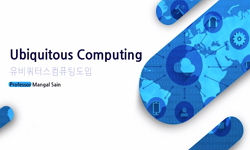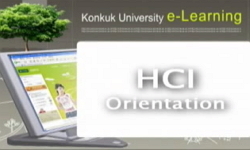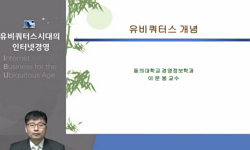현재 유비쿼터스 컴퓨팅 분야에서 중요한 연구 과제 중 하나가, 사용자 연구에 따른 적합한 인터페이스를 제공할 수 있도록 하는 것이다. 디지털 환경에서는 컴퓨터가 외부로 노출 적으로 ...
http://chineseinput.net/에서 pinyin(병음)방식으로 중국어를 변환할 수 있습니다.
변환된 중국어를 복사하여 사용하시면 됩니다.
- 中文 을 입력하시려면 zhongwen을 입력하시고 space를누르시면됩니다.
- 北京 을 입력하시려면 beijing을 입력하시고 space를 누르시면 됩니다.
Ubi-com에서의 GUI(graphic user interface)와 TUI(tangible user interface)비교분석에 관한 연구 = The research of comparison analysis for between GUI and TUI under the Ubiquitous-computing environment
한글로보기https://www.riss.kr/link?id=A60034642
- 저자
- 발행기관
- 학술지명
- 권호사항
-
발행연도
2007
-
작성언어
Korean
- 주제어
-
자료형태
학술저널
-
수록면
193-202(10쪽)
- 제공처
-
0
상세조회 -
0
다운로드
부가정보
국문 초록 (Abstract)
현재 유비쿼터스 컴퓨팅 분야에서 중요한 연구 과제 중 하나가, 사용자 연구에 따른 적합한 인터페이스를 제공할 수 있도록 하는 것이다. 디지털 환경에서는 컴퓨터가 외부로 노출 적으로 드러나 있는 반면 유비쿼터스 환경에서는 컴퓨터가 그 자체의 모습을 잃고 눈에서 사라지는 컴퓨터가 될 것이다. 이는 모든 사물에 컴퓨터가 심어질것이며 심지어 입는 컴퓨터나 먹을 수 있는 컴퓨터 까지 생겨날 수 있다는 예시이다. 현재 우리는 거의 마이크로소프트윈도우를 통한 컴퓨터를 사용하고 있으며 이에 따른 인터페이스로 GUI(Graphical User Interface)를 사용하고 있다. GUI 에 기반을 둔 HCI(Human Computer Interface)는 전면부에 있는 사각형 스크린위에서 시각적 형태로 모든 정보들을 표현 한다. 따라서 그 자신을 매우 제한된 의사소통 채널로 국한 시키고 있다. GUI는 사람들이 평생 동안 실제 세계와의 상호작용을 통하여 발전시켜온 인간의 감각과 기술의 풍부함을 포용하기에는 모자란 감이 있다. 특히 유비쿼터스 환경에서는 차원이 다른 디지털 인터페이스를 요구하고 있으며 사이버공간과 실제공간을 잇는 ‘제3공간’을 표현하기에는 더더욱 어려움이 있다. 이를 극복하기 위하여 디자인을 비롯한 여러 분야에서 새로운 인터페이스 및 인터렉션 방식에 대한 연구가 진행되고 있다. 그 대표적 예가 TUI(Tangible User Interface)이다. TUI는 인간이 실생활에서 오랜 시간 발전시켜온 감각과 운동을 인터페이스에 적용시키고자 한다. 즉, 실재로 물건을 만지고 느끼고 잡고 옮기는 등의 행위를 통해 디지털 정보를 조작하는 것이다. TUI는 현재 광범위하게 사용되고 있는 GUI모델들, 즉 편평한 사각형의 디스플레이, 윈도우, 마우스 및 키보드 등으로 구성되어 있는 컴퓨터의 한계를 넘어서는 구체적인 방법을 보주는 것이라고 할 수 있다.
TUI는 새로운 디지털 인터페이스로 관련 산업, 기술, 제품의 위상을 변화시키고 유비쿼터스 문화의 새로운 요소로 자리 매김을 할 것이다.
다국어 초록 (Multilingual Abstract)
In response to the recent explosive development of computer technology and its ubiquity, changes in user technologies, and the limitation of graphic interface, the new trend of HCI (human computer interaction) is emerging in the area of interface desi...
In response to the recent explosive development of computer technology and its ubiquity, changes in user technologies, and the limitation of graphic interface, the new trend of HCI (human computer interaction) is emerging in the area of interface design. Reserch on HCI is mainly focused on finding fundamental solutions for overcoming conventional interface relying on monitor, mouse and keyboard. However, such solutions must not be limited to convenient and easy input methods but should reflect various human abilities to control and sense, which have been overlooked in traditional computing.
In ubiquitous computing environment, GUI (Graphic User Interface) based on flat rectangular displays of desktop computers will evolve no longer. Its new alternative TUI (Tangible User interface) is characterized most by ‘touching interface.’ Till assigns physical shapes to digital information using artifacts that can be expressed and manipulated. Through the interface, information, which has been confined within the computer, can be viewed, touched and heard as a part of life in our everyday life.
Ubiquitous interface does not need to rely on vision only. It should be able to use all human senses. People should be able to see, hear, smell and feel the computer. Interface should be designed in a way that the user can recognize things and events spatially and temporally. Approach to TUI must be preceded by understanding the evolution of computing and reflect the changes.
which resembles the evolution, which has been made by active reaction on the environmental change. It is the time to find the intrinsic nature and the solution of design from the viewpoint of social evolution.
목차 (Table of Contents)
- (要約)
- (Abstract)
- 1. 서론
- 2. 이론적 배경
- 3. 인터페이스의 개념
- (要約)
- (Abstract)
- 1. 서론
- 2. 이론적 배경
- 3. 인터페이스의 개념
- 4. TUI(Tangible Uer Interface)의 고찰
- 5. TUI와 GUI(Graphic User Interface)의 비교
- 6. 결론
- 참고문헌
동일학술지(권/호) 다른 논문
-
- 한국디자인지식학회
- 염정(Yum, Jung)
- 2007
-
사용자 중심 디자인 프로세스에서 비디오 활용에 대한 실증적 연구
- 한국디자인지식학회
- 박정순(Park, Jeong Soon)
- 2007
-
- 한국디자인지식학회
- 김지연(Kim, Jee Yeon)
- 2007
-
온라인 커뮤니티를 보조로 이용하는 환경이 대학의 수업에 미치는 영향
- 한국디자인지식학회
- 허옥련(Hur, Ock Ryun)
- 2007




 DBpia
DBpia




